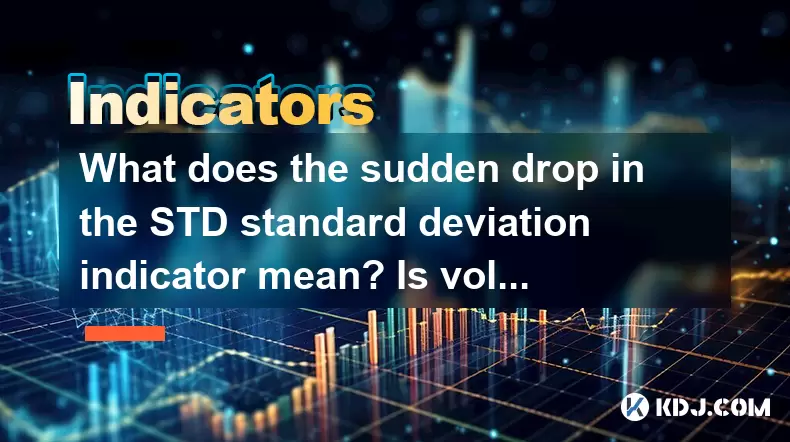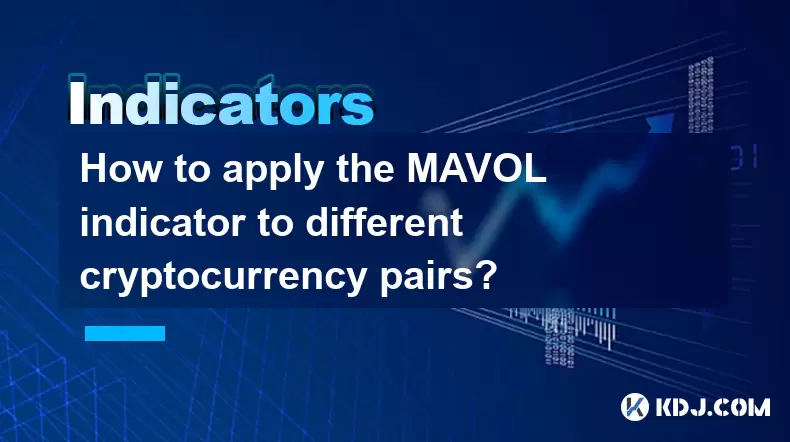-
 Bitcoin
Bitcoin $118400
0.47% -
 Ethereum
Ethereum $3836
2.20% -
 XRP
XRP $3.157
2.98% -
 Tether USDt
Tether USDt $0.9999
-0.03% -
 BNB
BNB $801.5
1.31% -
 Solana
Solana $180.9
2.07% -
 USDC
USDC $0.9999
-0.02% -
 Dogecoin
Dogecoin $0.2225
2.50% -
 TRON
TRON $0.3285
-1.02% -
 Cardano
Cardano $0.7789
2.60% -
 Hyperliquid
Hyperliquid $43.60
2.39% -
 Sui
Sui $3.892
4.41% -
 Stellar
Stellar $0.4229
3.34% -
 Chainlink
Chainlink $18.01
3.98% -
 Hedera
Hedera $0.2745
6.77% -
 Bitcoin Cash
Bitcoin Cash $582.3
3.38% -
 Avalanche
Avalanche $23.77
1.04% -
 Ethena USDe
Ethena USDe $1.001
0.01% -
 Toncoin
Toncoin $3.493
3.59% -
 Litecoin
Litecoin $110.0
2.48% -
 UNUS SED LEO
UNUS SED LEO $8.936
-0.37% -
 Shiba Inu
Shiba Inu $0.00001304
2.49% -
 Uniswap
Uniswap $9.999
1.09% -
 Polkadot
Polkadot $3.897
3.26% -
 Monero
Monero $308.6
-0.83% -
 Dai
Dai $0.9999
-0.01% -
 Bitget Token
Bitget Token $4.504
-0.04% -
 Pepe
Pepe $0.00001154
2.95% -
 Cronos
Cronos $0.1471
3.06% -
 Ethena
Ethena $0.6691
19.53%
What does the sudden drop in the STD standard deviation indicator mean? Is volatility about to return?
A sudden drop in the standard deviation indicator signals reduced price volatility, often preceding a market breakout or continuation after consolidation.
Jun 21, 2025 at 10:35 am

Understanding the STD Standard Deviation Indicator
The STD (Standard Deviation) indicator is a statistical tool used in technical analysis to measure the volatility of an asset's price over a specified period. In the context of cryptocurrency trading, this indicator helps traders assess how much the price of a digital asset deviates from its average price. When the standard deviation value drops suddenly, it suggests that the price movements have become more stable or compressed compared to recent historical data.
This compression often indicates a lull in market activity. Traders closely monitor such changes because they may signal either a continuation of the current trend or a potential reversal. The drop in standard deviation doesn't inherently predict the direction of the next move but rather reflects reduced variability in price action.
Why Does Standard Deviation Drop Suddenly?
A sudden drop in the STD indicator can be attributed to several factors within the crypto market:
- Market consolidation: After a significant price movement—either upward or downward—the market often enters a phase where prices stabilize. During this time, the standard deviation decreases as price swings narrow.
- Low trading volume: Reduced participation from traders and investors leads to smaller price fluctuations. This typically occurs during holiday periods, major news events, or when traders are waiting for new information.
- Price range-bound behavior: When an asset trades within a tight range without clear directional momentum, the standard deviation naturally declines.
- Algorithmic trading patterns: Automated systems sometimes contribute to lower volatility by executing trades within predefined ranges, which can suppress price swings and thus reduce standard deviation.
Each of these conditions contributes to the observed decline in the standard deviation metric, offering insights into the underlying market dynamics.
Linking STD Drops with Volatility Cycles in Cryptocurrency
Volatility in the cryptocurrency market tends to follow cyclical patterns. Periods of high volatility are often followed by phases of calm, and vice versa. A declining standard deviation may indicate that the market has entered one of these quieter phases. However, it's important to note that low volatility doesn’t last indefinitely.
Historical data shows that after extended periods of low standard deviation, markets tend to experience sharp increases in volatility. This phenomenon is especially pronounced in the crypto space due to its inherent sensitivity to macroeconomic news, regulatory developments, and technological upgrades.
In many cases, a sharp drop in standard deviation precedes a breakout—either to the upside or downside. These breakouts are often triggered by external catalysts such as exchange announcements, halving events, or unexpected geopolitical shifts.
Interpreting Low STD Values in Trading Strategies
Traders use the standard deviation indicator not only to gauge current volatility but also to anticipate future price movements. Here’s how some interpret a sudden drop in the indicator:
- Bollinger Bands correlation: Since Bollinger Bands are based on standard deviation, a narrowing band often coincides with falling standard deviation. This signals a potential breakout once the bands widen again.
- Mean reversion strategies: Some traders assume that after a period of low volatility, prices will eventually revert to their average trend. They position themselves accordingly in anticipation of a move.
- Breakout trading: Others look for signs of increased volume or momentum following a drop in standard deviation, signaling a possible breakout that could be exploited for profit.
It's crucial for traders to combine the STD indicator with other tools like volume analysis, moving averages, and support/resistance levels to increase the probability of successful trades.
Real-Time Examples from Crypto Markets
Examining real-world scenarios can provide clarity on how a drop in standard deviation plays out in practice:
- In early 2023, Bitcoin experienced a multi-week consolidation phase where the standard deviation dropped significantly. This was followed by a sharp rally driven by positive inflation data and ETF speculation.
- Ethereum saw similar behavior post-merge, where price stabilized for days before surging due to network usage metrics and Layer-2 adoption news.
- Altcoins like Solana and Cardano also exhibited reduced standard deviation ahead of notable price spikes tied to ecosystem updates and exchange listings.
These examples illustrate that while a falling standard deviation doesn't guarantee volatility will return immediately, it often serves as a precursor to heightened market activity under the right conditions.
FAQ: Common Questions About STD Drops and Volatility
What does a low standard deviation mean for crypto traders?
A low standard deviation indicates that price movements are becoming more predictable and less erratic. For traders, this means fewer opportunities for quick profits unless a breakout occurs.
Can standard deviation be used alone to predict volatility?
While standard deviation is a valuable tool, relying solely on it can lead to incomplete analysis. It should be used alongside other indicators like volume, RSI, and MACD to confirm potential volatility shifts.
Is there a typical timeframe for volatility to return after a drop in standard deviation?
There is no fixed timeframe. Volatility can return within hours or take weeks depending on market sentiment, news cycles, and broader economic factors.
How do institutional activities affect standard deviation trends?
Institutional inflows and outflows can significantly impact price stability. Large orders placed by institutions often create artificial stability, which can mask true market volatility until a trigger event occurs.
Disclaimer:info@kdj.com
The information provided is not trading advice. kdj.com does not assume any responsibility for any investments made based on the information provided in this article. Cryptocurrencies are highly volatile and it is highly recommended that you invest with caution after thorough research!
If you believe that the content used on this website infringes your copyright, please contact us immediately (info@kdj.com) and we will delete it promptly.
- SEC, Crypto, and On-Chain: Navigating the Regulatory Maze
- 2025-08-01 02:31:40
- Bitcoin Bullish Market: How Long Positions are Boosting the Crypto King
- 2025-08-01 02:35:33
- Visa, Stellar, and Stablecoins: A New York Minute on the Future of Finance
- 2025-08-01 01:50:50
- BCH, FET, BlockDAG: Decoding the Crypto Buzz
- 2025-08-01 01:16:37
- Conflux Token, Crypto Simplicity, and WeWake Finance: A New Era?
- 2025-08-01 01:50:50
- Dogecoin, Remittix, and Analyst Targets: Navigating the Crypto Landscape
- 2025-08-01 01:55:40
Related knowledge

What does it signify when the MACD crosses below the zero line?
Aug 01,2025 at 01:43am
Understanding the MACD IndicatorThe Moving Average Convergence Divergence (MACD) is one of the most widely used technical analysis tools in the crypto...

How does the MACD histogram show momentum?
Aug 01,2025 at 01:16am
Understanding the MACD Histogram and Its Role in Cryptocurrency TradingThe MACD histogram is a visual representation of the difference between the MAC...

What is a MACD crossover?
Jul 31,2025 at 11:52pm
Understanding the Role of Private Keys in Cryptocurrency SecurityIn the world of cryptocurrency, private keys are the cornerstone of ownership and con...

How can you use the MACD histogram to determine trend strength?
Jul 31,2025 at 11:10pm
Understanding the MACD Histogram and Its ComponentsThe MACD (Moving Average Convergence Divergence) histogram is a visual representation of the differ...

What is the impact of different moving average types (SMA vs. EMA) on the MAVOL indicator?
Aug 01,2025 at 02:31am
Understanding the MAVOL Indicator in Cryptocurrency AnalysisThe MAVOL (Moving Average Volume) indicator is a technical analysis tool used in the crypt...

How to apply the MAVOL indicator to different cryptocurrency pairs?
Aug 01,2025 at 12:43am
Understanding the MAVOL Indicator in Cryptocurrency TradingThe MAVOL indicator, short for Moving Average Volume, is a technical analysis tool that app...

What does it signify when the MACD crosses below the zero line?
Aug 01,2025 at 01:43am
Understanding the MACD IndicatorThe Moving Average Convergence Divergence (MACD) is one of the most widely used technical analysis tools in the crypto...

How does the MACD histogram show momentum?
Aug 01,2025 at 01:16am
Understanding the MACD Histogram and Its Role in Cryptocurrency TradingThe MACD histogram is a visual representation of the difference between the MAC...

What is a MACD crossover?
Jul 31,2025 at 11:52pm
Understanding the Role of Private Keys in Cryptocurrency SecurityIn the world of cryptocurrency, private keys are the cornerstone of ownership and con...

How can you use the MACD histogram to determine trend strength?
Jul 31,2025 at 11:10pm
Understanding the MACD Histogram and Its ComponentsThe MACD (Moving Average Convergence Divergence) histogram is a visual representation of the differ...

What is the impact of different moving average types (SMA vs. EMA) on the MAVOL indicator?
Aug 01,2025 at 02:31am
Understanding the MAVOL Indicator in Cryptocurrency AnalysisThe MAVOL (Moving Average Volume) indicator is a technical analysis tool used in the crypt...

How to apply the MAVOL indicator to different cryptocurrency pairs?
Aug 01,2025 at 12:43am
Understanding the MAVOL Indicator in Cryptocurrency TradingThe MAVOL indicator, short for Moving Average Volume, is a technical analysis tool that app...
See all articles

























































































